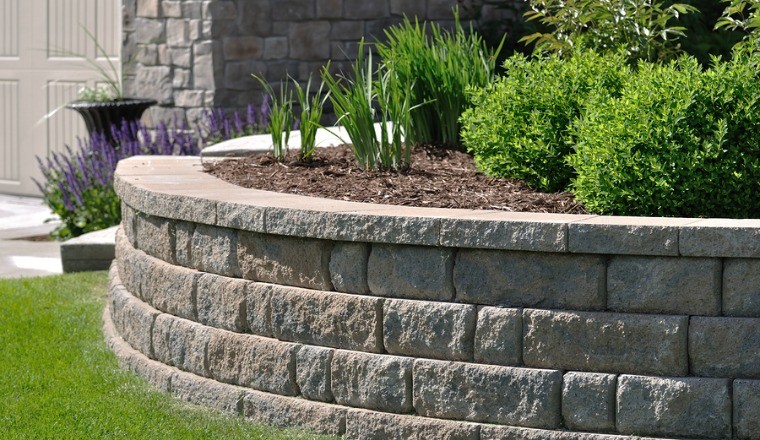Retaining walls live up to their namesake by “retaining” the shape of a raised landscape. If your flower bed sits higher than the rest of your yard, for instance, you can build a retaining wall to preserve its shape and structure.
Without this key element, erosion from rainwater will cause the flower bed to wash away. This isn’t something that happens overnight, but over time mother nature will take its toll on your land.
Another reason why so many homeowners choose to build retaining walls is the stylish, textured appearance it offers. Whether you prefer traditional brick pavers, stone, or even wood, a retaining wall can add a new dynamic to your landscape; thereby increasing your home’s curb appeal.
Check For Utilities
The first step in building a retaining wall is to check and make sure no utilities run underneath the desired area. There’s no faster way to ruin your landscaping project than by accidentally hitting a gas or water line.
To determine the location of your utility lines, call the respective companies and ask them. Most utility companies will gladly tell you where your lines are located and if it’s safe to dig.
You can also call 811 from any telephone and request that someone come out and mark your property where underground utility lines run.
Do I Need a Permit?
Depending on where you live, you may need to acquire a permit to legally construct a retaining wall in your yard or garden. Contact your county or city’s development center to see if permits are required for projects such as this.
Here are a few links to the websites of cities and counties within our service area. This will get you started in the right direction.
Williamson County
Georgetown
Round Rock
Cedar Park
Hutto
Taylor
Travis County
Austin
Pflugerville
This is really just another way for them to generate revenue, but it’s always a good idea to follow local laws and regulations when performing any work on your home, retaining walls included.
Designing a Retaining Wall
Now comes the fun part: designing your retaining wall. If you haven’t done so already, take a few minutes to survey your garden and mark the area where you want to construct the wall. You can create a rough sketch of your desired retaining wall on a notepad, showing the height, depth and width.
Remember, the entire purpose of a retaining wall is to raise a section of land, so you’ll want to build it tall enough to accomplish this task. So, how tall should it be? It really depends on your preference, but most retaining walls are around 2-4 feet.
Constructing Your Retaining Wall
The steps to constructing a retaining wall varies depending on the material used, the size and shape of the land, the condition of the soil, and numerous other factors.
The general idea is to dig a trench in the area you wish to construct the wall (remember, check for utilities first), followed by laying your bricks and then back-filling the raised area behind the retaining wall with a good quality soil.
If you aren’t comfortable building the retaining wall, you can always hire a professional contractor or landscaping company to do it for you.
Be Careful Around Your Trees
And one last word of caution. You’ll also want to be careful around your existing trees. Digging to install a retaining wall around trees could cause damage to the root system and compromise the health of your trees, especially in our hot Texas summers.
The Woodsman Company offers tree planting, tree pruning and shrub trimming, tree removal and stump grinding as well as a tree wellness program.
If we can help with any of your tree care needs give us a call at 512-846-2535 or 512-940-0799 or


Yes you are right Roy, retaining walls give a very beautiful appearance to the landscape but yes, as you said, care should be taken to not hit one of the utility lines or accidentally cut the roots of one of the trees.